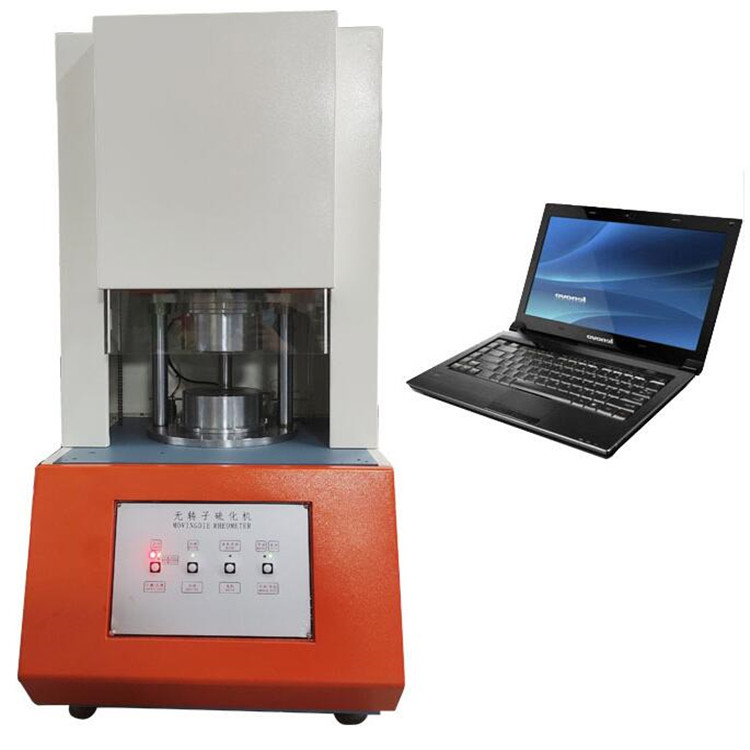Tiempo: Popularidad:0tiempos
 Criterios aplicables:
Criterios aplicables:
Parámetros principales(cuadro 1):
| Parámetros | Alcance / especificaciones |
|---|---|
| Temperature Control | 100–200°C (±0.3°C stability) |
| Oscillation Frequency | 1.7 Hz (standard), 0.5–2 Hz adjustable |
| Strain Amplitude | ±0.5° angular or ±0.05 mm linear |
| Torque Measurement | 0–20 N·m (resolution: 0.001 N·m) |
| Sample Volume | 3–5 cm³ (cylindrical mold) |
| Salida de datos | Real-time torque-time curves |
Principio de funcionamiento:
The tester operates by sealing a rubber specimen in a two-part mold cavity. One section oscillates with a small-amplitude motion (angular or linear), inducing shear strain, while the other remains stationary. A transducer measures the torque response, which correlates with the material’s viscoelastic changes during curing. Key metrics derived include:
Principios de la prueba:
The test simulates industrial curing conditions by heating the specimen to a predefined temperature. As crosslinking begins, the torque increases due to rising shear modulus. The instrument plots torque vs. time curves, enabling calculation of cure rates and activation energy. Advanced models incorporate temperature compensation algorithms to minimize thermal gradients, ensuring repeatability. By comparing torque increments (e.g., 90% of MH), manufacturers optimize formulations for specific applications, such as high-rebound soles or oil-resistant seals.
Aplicación:
This equipment’s precision and compliance with international standards make it indispensable for modern rubber labs, ensuring products meet durability and safety requirements.
Teléfono de la empresa
+86-21-6420 0566
Horas de trabajo
De lunes a viernes
Teléfono móvil:
13816217984
Correo electrónico:
info@qinsun-lab.com
